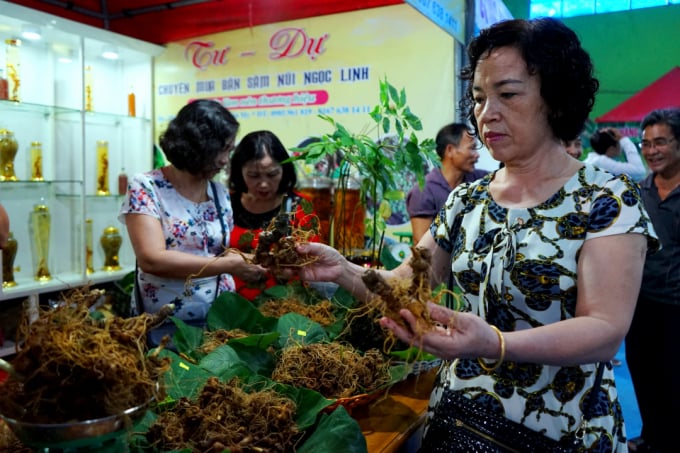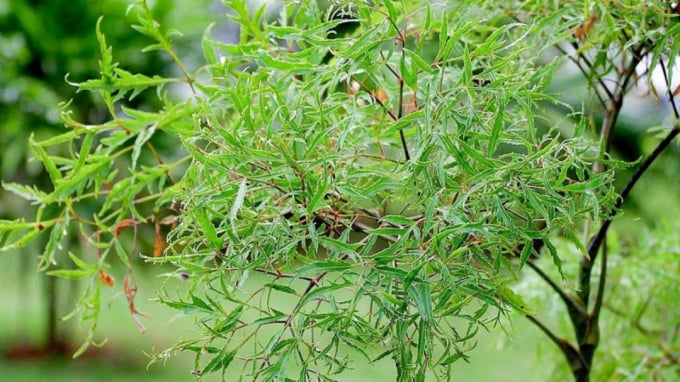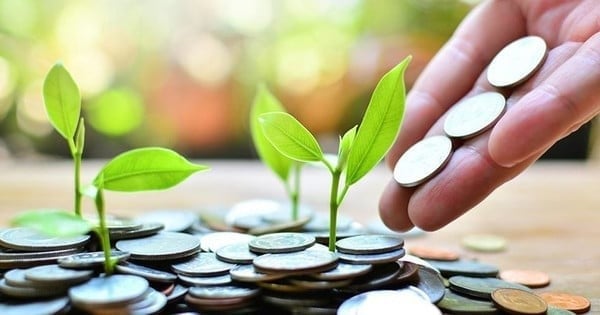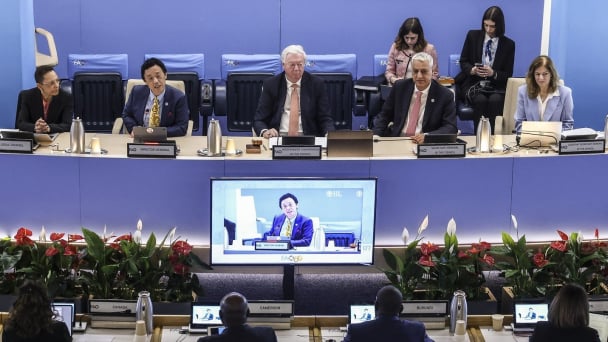April 15, 2025 | 16:44 GMT +7
April 15, 2025 | 16:44 GMT +7
Hotline: 0913.378.918
April 15, 2025 | 16:44 GMT +7
Hotline: 0913.378.918

In parallel with developing domestic medicinal plants, the country has also imported over 100 species of foreign medicinal plants from Japan, China, Cuba, and South Korea. About 30 species have been put in massive production.
At present, the data showed that total production of medicinal herbs in the country is estimated to reach about 55,5000 tonnes, including 20,900 tonnes of Illicium verum; 1,400 tonnes of Panax pseudoginseng; 500 tonnes of ginseng; 500 tonnes of Elettaria cardamomum, 700 tonnes of Coix lacryma-jobi, and 2,000 tonnes of Cardamom.
The yield of normal medicinal products, such as Pimpinella anisum, Styphnolobium japonicum, Cinnamomum zeylanicum Nees, Cardamom has basically met the domestic market demand and export.
However, the country still has to import a large amount of some medicinal herbs of Angelica sinensis, Coix lacryma-jobi, Panax pseudoginseng and Ligusticum striatum. The amount is believed to account for up to 80 percent of the annual consumption of our country.
In parallel with developing domestic medicinal plants, the country has also imported over 100 species of foreign medicinal plants from Japan, China, Cuba, and South Korea. About 30 species have been put in massive production.
As calculated, Viet Nam now has 517 enterprises specialized in manufacturing medicines and pharmaceuticals so far. Some of the enterprises have invested in buying seedlings, technical guidance, technology transfer and setting up areas to grow medicinal plants as well as establishing pharmaceutical processing factories.
For example, Traphaco Company has implemented the BioTrade project to develop an area to grow Polyscias fruticose in Nam Dinh Province; Panax pseudoginseng in Cao Bang; Panax vietnamensis/Ngoc Linh ginseng in Quang Nam Province and Kon Tum Province; Cynara scolymus and Ampelopsis cantoniensis in Lao Cai Province under the VietGAP standards. The company also harvested medicinal plants as recommended by the Good Agricultural and Collection Practices of the World Health Organisation (GACP-WHO).
The II Medical Import-Export Company in Ho Chi Minh City has set up an area of growing Styphnolobium japonicum intercropped with agricultural crops in the Central Highlands region.
Dong Thap Muoi Centre for Research and Development of Medicinal Materials has planned an area to grow Melaleuca for oil distillation.
Mediplantex Pharmaceutical Joint Stock Company, Chau Giang Pharmaceutical Company Limited have established an area to grow Japanese mint in provinces of Hung Yen, Nam Dinh and Binh Dinh. OPC Company has set up an area to grow Desmodium styracifolium in Bac Giang.
In Lao Cai Province, a group of companies has participated in the production and consumption of pharmaceutical products, including Traphacosapa Company, Tai Nguyen Xanh Company Limited, Tam Phat Green Company Limited, OPC Company, Viet Nam - Japan Pharmaceutical Joint Stock Company, Nam Ha Pharmaceutical Joint Stock Company and Hung Dung Company.
The master plan on the development of medicinal herbs by 2020, with a vision towards 2030, issued by the Government under Decision No 1976/QD-TTg in 2013, the total area of medicinal plants in the country is only about 28,300 hectares (ha).
However, in reality, the area of medicinal plants in the country has exceeded the plan. Only Kon Tum Province, it already planned to develop an area of 31,700 ha to grow Ngoc Linh ginseng, far exceeding the plan under the decision.
According to the decision, the total area of growing Pimpinella anisum is planned to be about 500 ha throughout the country, however, the real number reaches up to over 57,000 ha nationwide. The total area of growing Cinnamomum zeylanicum Nees is planned to be 2,000 ha while the actual area is now 105,000 ha.

The actual area of medicinal herbs has exceeded about 166 percent now compared to the decision’s plan.
The Department of Crop Production said that by the end of 2020, the area of medicinal plants nation-wide was expected to reach 77,4000 hectares, including 47,800 ha of perennial medicinal plants, accounting for 61.8 percent of the total area of medicinal plants; and 29,600 ha of annual medicinal plants, making up of 38.2 percent of the total area of medicinal plants.
The actual area of medicinal herbs has exceeded about 166 percent now compared to the decision’s plan.
The decision targets that Viet Nam will meet 60 percent of domestic demand on medicinal plants by 2020 and 80 percent by 2030. The rest percentage of medicinal plants will be imported, mainly from China.
Pham Van Dien, deputy head of the Viet Nam Administration of Forestry, said currently, the majority of medicinal plants were located in forests, including many rare and endangered medicinal plants with high-economic value in primary and special-use forests.
However, current mechanisms had not encouraged people to develop and exploit the rare medicinal herbs in special-use forests, he said.
For protective forests, the regulations only allowed forest owners to combine development and exploitation of non-timber forest products, but there was still no mechanism permitting the forest owners to co-operate with individuals, organizations and businesses to exploit non-timber forest products, he added.
Additionally, the natural forests were closed in our country, he said.
“Thus, the direction for developing medicinal plants could only be based on protective and planted forests,” he said.
It was necessary to establish planted forests that specialized in providing non-timber forest products, including medicinal plants, Dien said.
Translated by Bich Huong

(VAN) After the merger, key leadership personnel of the provinces must consult with the General Secretary, key leaders, and the Standing Secretariat.

(VAN) The latest Business Benchmark on Farm Animal Welfare (BBFAW) reveals steady progress on farm animal welfare across the global food industry.

(VAN) Green credit is a financial policy that effectively supports environmentally friendly projects and activities today.
/2025/04/09/1049-2-165919_630.jpg)
(VAN) With a revenue of less than VND 30 billion/year, packaging producers are exempted from EPR liability under Decree No. 05/2025 newly issued.

(VAN) Ministry of Agriculture and Environment has issued an Action Plan for sector's development in the coming period, aiming for a growth rate of 4% or higher and an export turnover of USD 65 billion.

(VAN) The 177th Session of the FAO Council opened on Monday at the Organization’s headquarters in Rome.

(VAN) In a statement, the Federation of Free Farmers (FFF) said the government must not be complacent over the reciprocal tariffs even if the Philippines will be slapped with the second lowest rate among US trade partners.